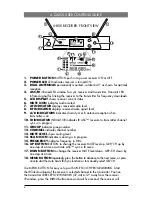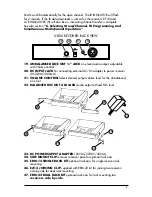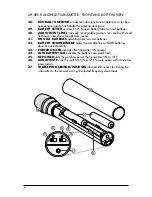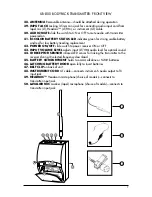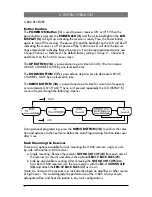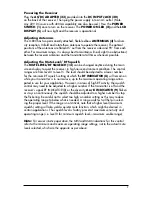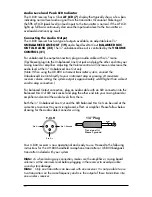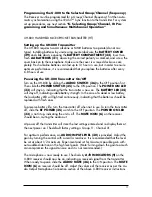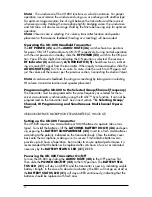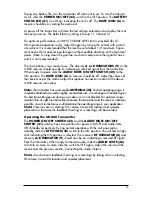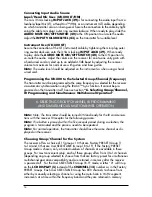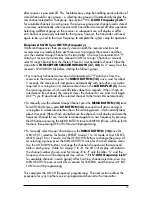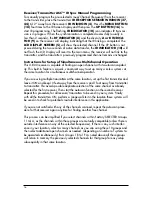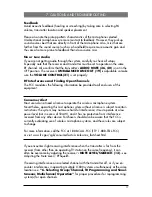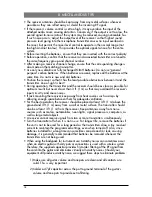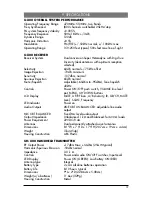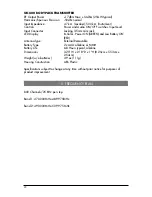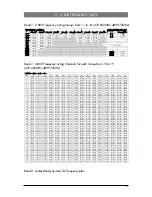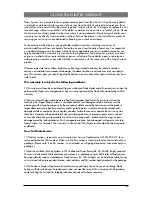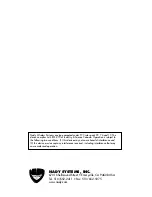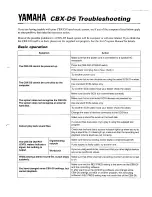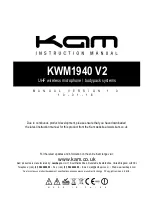
18
• The receiver antennas should be kept away from any metal surfaces whenever
possible as they can reflect away or shield the incoming RF signal.
• If the receiver’s volume control is set too high, it may overdrive the input of the
attached audio mixer, causing distortion. Conversely, if the output is set too low, the
overall signal-to-noise ratio of the system may be reduced, causing noticeable hiss.
If such noise occurs, adjust the output level of the receiver so that highest sound
pressure level going into the microphone transmitter causes no input overload in
the mixer, but permits the mixer level control to operate in the normal range (not
too high and not too low). This provides the optimal signal-to-noise for the entire
system.
• Before inserting the batteries, ensure that they are inserted with the correct polarity.
• Before operation, confirm that the receiver and associated transmitter are tuned to
the same frequency group and channel number.
• After making a receiver channel change, ensure that the corresponding change is
also made on the matching transmitter.
• Use only new alkaline or fully recharged NiMH batteries. Do not use “general
purpose” carbon batteries. When batteries are weak, replace all the batteries at the
same time. Do not mix new and old batteries.
• Position the receiver so that it has the least possible obstructions between it and the
transmitter. Line-of-sight is best!
• During operation, the transmitter and the receiver should be as close as possible for
optimum results but never closer than 3 ft. (1 m) as that may overload the receiver’s
input circuitry and cause noises.
• If rack mounting the receiver, keep away from heat sources such as amps by
allowing enough space between them for adequate ventilation.
• For the best operation, the receiver should be placed at least 3 ft. (1 m) above the
ground and 3 ft. (1 m) away from a wall or metal surface. The transmitter should
also be at least 3 ft. (1 m) from the receiver. keep antennas away from noise
sources such as motors, automobiles, neon lights, signal processors, computers, as
well as large metal objects.
• A receiver cannot receive signals from two or more transmitters simultaneously.
• Turn the transmitter off when it is not in use. For longest life, remove the batteries if
the unit is not to be used for a long period as the transmitters draw a tiny residual
current to maintain the programmed settings, even when turned off. Also, since
batteries installed for a long time can sometimes corrode and/or leak, causing
damage, it is generally recommended that batteries be removed whenever the
transmitters are not being used.
• When using the bodypack for instrument use: Scratchy noises can sometimes occur
when an electric guitar with dirty pots or connections is used with a wireless system.
Therefore, the supplied capacitor provides first-order filtering of the RF signal from
the cord into the guitar and eliminates virtually all scratchy noises. Should your
equipment still produce scratchy noise, we suggest these steps to eliminate problems:
1) Make sure all guitar volume and tone pots are clean and all contacts are
solid. This is very important.
2) Solder a 47pF capacitor across the pot to ground terminal of the guitar’s
volume and tone pots to provide extra filtering.
8. MISCELLANEOUS TIpS

